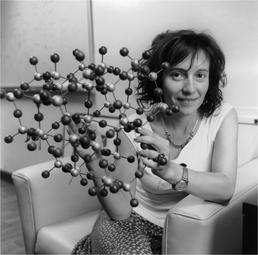Seminar 17th March 2011 10:30 a.m. 27/2003
Modeling transition metal and actinide chemistry with multiconfigurational quantum chemical methods
Professor Laura Gagliardi
Department of Chemistry University of Minnesota
- Web page
- http://www.chem.umn.edu/groups/gagliardi/home.html
- Categories
- Catalysis, Complex Systems, Computer Science, Density functional Theory, Fortran, Gaussian, HECToR, HPC, Jaguar, Molecular Dynamics, Quantum Chemistry, Scientific Computing, Software Engineering
- Submitter
- Chris-Kriton Skylaris
Quantum chemistry can be applied to the study of systems containing any atom in the periodic table. In this lecture I will describe our recent studies of polymetallic molecules containing (N)3- and (O)2- ligands, namely [(C5Me5)U(µ-I)2]3(?3-N), [(C5Me5)U(µ-I)2]3(?3-O), and chair and boat conformations of [(C5Me5)2U(µ-N)U(µ-N3)(C5Me5)2]4.[1] These compounds were analyzed to differentiate nitride versus oxide in molecules for which the crystallographic data were unclear, and to provide insight into their electronic structure and unique chemical bonding. The second part of the lecture will be dedicated to the description of recent advances in quantum chemical methods suitable for the study of systems containing metals in general.[2],[3] Examples from transition metal chemistry will be discussed.
[1] T. K. Todorova, L. Gagliardi J. R. Walensky, K. A. Miller and W. J. Evans. DFT and CASPT2 analysis of polymetallic uranium nitride and oxide complexes: how theory can help when X-ray analysis is inadequate Journal of the American Chemical Society, 132, 12397-12403 (2010)
[2] V. Sauri, L. Serrano-Andrés, A. Rehaman Moughal Shahi, L. Gagliardi, S. Vancoillie, K. Pierloot. Multiconfigurational Second-Order Perturbation Theory Restricted Active Space (RASPT2) Method for Electronic Excited States: a Benchmark Study J. Chem. Theory and Comp. 7 (1), 153-168 (2011)
[3] G. Li Manni, F. Aquilante, L. Gagliardi. Strong correlation treated via effective hamiltonians and perturbation theory J. Chem. Phys. 134, 034114 (2011)
